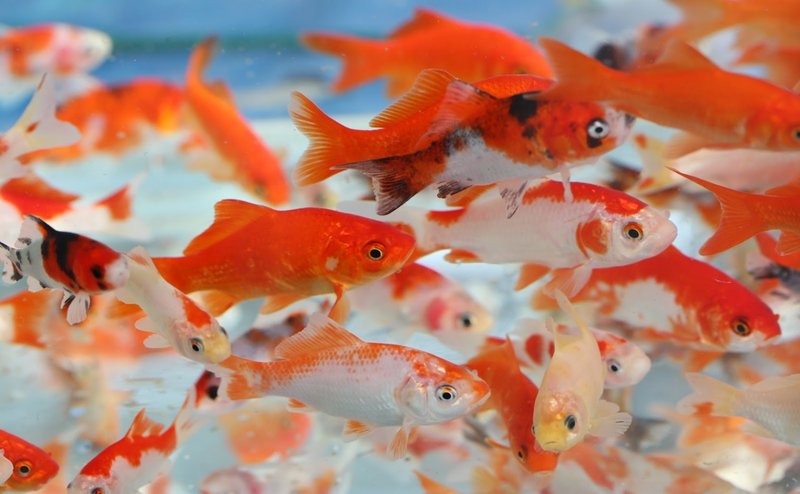
To put it simply, the lifespan of goldfish can vary widely based on several factors, including their species, environment, and care. Unlike many other pets, goldfish have the potential to live for decades when properly cared for, almost like a little underwater dog! But how do you ensure your goldfish lives a long, happy life? Let’s dive deep into the world of goldfish longevity.
The Lifespan of Goldfish: What You Can Expect
Goldfish can live anywhere from 5 to 15 years in captivity, but some species have been known to exceed 20 years with the right care. It’s almost like thinking about a tree—plant it in the right soil, give it enough sunlight, and it can keep growing for a long time. The same goes for goldfish!
Here’s a general breakdown of goldfish lifespans:
- Common Goldfish: Typically live 5-10 years.
- Fancy Goldfish: Often range from 10-15 years.
- Koi Goldfish: Can exceed 20 years if raised in optimal conditions.
You might be imagining these little fish swimming around for years, brightening your living space. Remember, their lifespan isn’t just about numbers; it’s about quality of life as well.
Factors Influencing Goldfish Lifespan
Just like us, goldfish have specific needs that affect their health and longevity. Here are some key factors that play a crucial role in how long your goldfish might live.
Water Quality
Water quality is vital for the health of your goldfish. Poor water quality can lead to stress and illness, significantly shortening their lifespan. Aerating, filtering, and regularly changing the water helps maintain a healthy environment. It’s essential to keep an eye on pH levels, ammonia, nitrite, and nitrate levels, just like checking the temperature before a swim!
Make sure to use a reliable test kit to monitor these levels and perform partial water changes weekly. Clean water is key to a happy, long-lived fish.
Diet and Nutrition
Feeding your goldfish a balanced diet is another crucial element. You wouldn’t want to eat the same meal every day, right? Goldfish thrive on a varied diet that includes high-quality flakes, pellets, and occasional treats like peas or daphnia. These little snacks mimic what they would naturally eat in the wild, promoting health and vitality.
Trying to stick to a schedule is a good idea. You might feed them twice a day, but only give them as much as they can eat in a couple of minutes to avoid overfeeding.
Goldfish Species and Their Lifespan
Different types of goldfish have unique lifespans, just as different dog breeds do. Knowing the species you have can give you a better idea of what to expect.
Common Goldfish
These are the basic goldfish you often see in pet stores. They’re typically hardy and adaptable, living up to 10 years with proper care. They can grow quite large, sometimes up to 12 inches, so make sure you have a spacious tank!
Fancy Goldfish
Imagine a goldfish with big, flowing fins and vibrant colors—these are fancy goldfish! They often have shorter bodies and can live about 10-15 years if properly cared for. Their unique physical features make them more sensitive to changes in water conditions, so keeping their habitat stable is crucial.
Koi Goldfish
Koi are often associated with outdoor ponds and can live remarkably long lives—20 years or more! These fish require a larger space and specific temperatures for optimal health. Proper pond maintenance, including filtration and regular cleaning, is vital if you want your koi to thrive.
Environmental Conditions and Care
The environment where your goldfish live significantly impacts their lifespan.
Adequate Tank Size
One of the most common beginner mistakes is thinking a small bowl is sufficient. Goldfish need space to swim, so a tank of at least 20 gallons is recommended for a single goldfish. Each additional fish typically requires an extra 10 gallons. A bigger tank helps maintain water quality and reduces stress.
Companionship and Social Needs
Goldfish can be social creatures, and having a companion can actually make them happier. Just be cautious about the species you mix. Some varieties may not get along well with others. Research compatible species, and ensure your tank is spacious enough for everyone!
Signs of Aging in Goldfish
As goldfish age, they may show some signs of getting older, similar to humans.
Physical Changes
You might notice changes in their coloration and fin condition. Older goldfish may develop a faded color or shorter fins. It’s natural, but it can be a bit sad to see them change. Ideally, these changes should happen gradually if they are healthy.
Behavioral Changes
Older goldfish may slow down a bit, spending more time resting at the bottom of the tank. It’s important to watch for any signs of illness, like lethargy or loss of appetite. Regular health checks can help you catch any problems early.
How to Ensure a Long Life for Your Goldfish
Here are some tips to keep your goldfish swimming happily for years to come:
- Maintain clean, filtered water and test it regularly.
- Feed a balanced diet, varying their meals for nutrition.
- Provide a spacious tank and a friendly community.
- Learn about their specific species requirements.
- Observe changes in behavior or appearance regularly.
It’s all about creating a cozy and stimulating environment for your finned friend.
In conclusion, goldfish can be more than just a pretty face in a bowl. With the right care, they can be long-term companions that bring joy for years. Remember, the effort you put into maintaining their environment, diet, and overall health directly affects how long these colorful fish live. So, embrace the adventure, and enjoy every moment with your goldfish!

